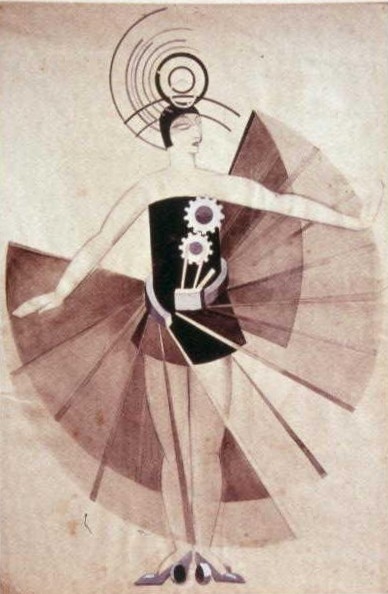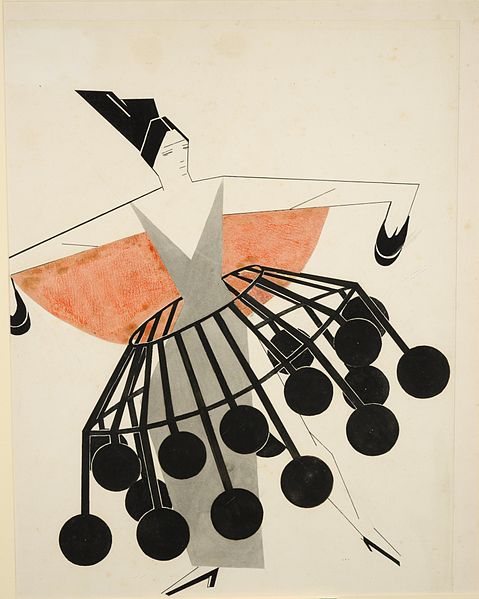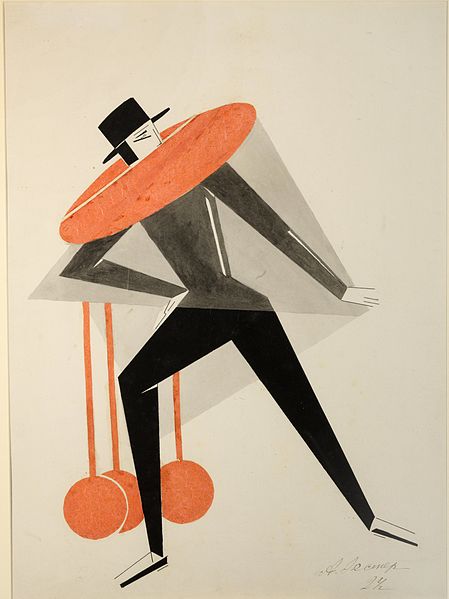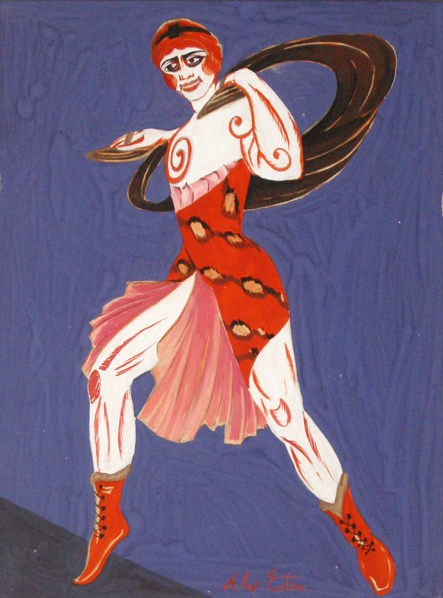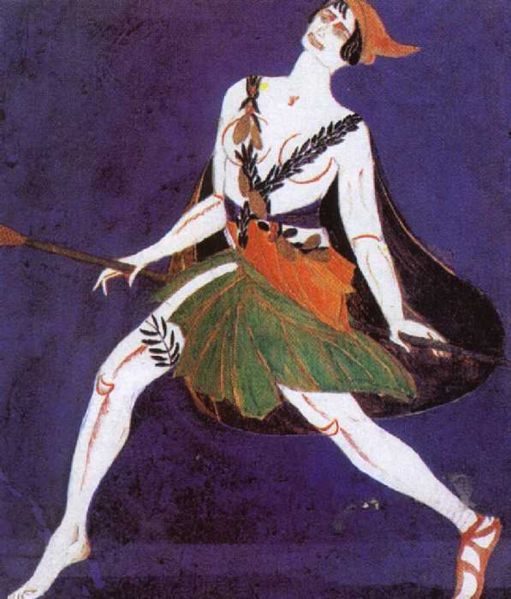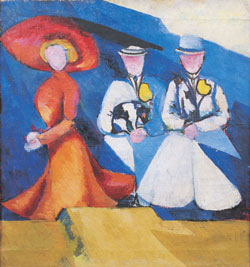<Back to Index>
- Painter Aleksandra Aleksandrovna Ekster, 1882
PAGE SPONSOR
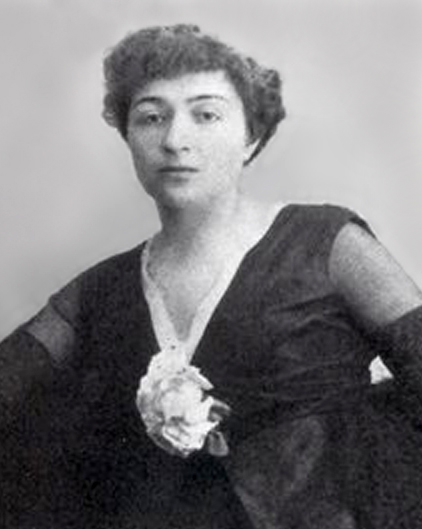
Aleksandra Aleksandrovna Ekster (Russian: Александра Александровна Экстер, Ukrainian: Олександра Олександрівна Екстер; 6 January 1882 – 17 March 1949) was a Russian-French painter (Cubo - Futurist, Suprematist, Constructivist) and designer.
She was born Aleksandra Aleksandrovna Grigorovich in Białystok, Imperial Russia (now Poland) to a wealthy Belarusian family. Her father, Aleksandr Grigorovich, was a wealthy businessman. Young Aleksandra received an excellent private education, she studied languages, music, art, and took private drawing lessons.
In 1903, Aleksandra Grigorovich married a successful Kiev lawyer, Nikolai Evgenyevich Ekster. The Eksters belonged to cultural and intellectual elite of Kiev. At that time she studied painting at Kiev art school. In 1907, she spent several months with her husband in Paris, and there she attended Académie de la Grande Chaumière in Montparnasse. From 1908 to 1924 she intermittently lived in Kiev, St. Petersburg, Odessa, Paris, Rome and Moscow.
Her painting studio in the attic at 27 Funduklievskaya Street was a rallying stage for Kiev's intellectual elite. There she was visited by poets and writers, such as Anna Akhmatova, Ilia Ehrenburg and Osip Mandelstam, dancers Bronislava Nijinska and Elsa Kruger, as well as many artists Alexander Bogomazov, Wladimir Baranoff - Rossine, and students, such as Grigori Kozintsev, Sergei Yutkevich and Aleksei Kapler among many others. In 1908 she participated in an exhibition together with members of the group Zveno (Link) organized by David Burliuk, Wladimir Burliuk and others in Kiev.
In Paris, Aleksandra Ekster was a personal friend of Pablo Picasso and Georges Braque, who introduced her to Gertrude Stein.
In 1914, Ekster participated in the Salon des Indépendants exhibitions in Paris, together with Kazimir Malevich, Alexander Archipenko, Vadym Meller, Sonia Delaunay - Terk and other French and Russian artists. In that same year she participated with the “Russians” Archipenko, Koulbine and Rozanova in the International Futurist Exhibition in Rome. In 1915 she joined the group of avant garde artists Supremus.
Ekster absorbed from many sources and cultures in order to develop her own original style. In 1915 – 1916 she worked in the peasant craft cooperatives in the villages Skoptsi and Verbovka along with Kazimir Malevich, Yevgenia Pribylskaya, Natalia Davidova, Nina Genke, Liubov Popova, Ivan Puni, Olga Rozanova, Nadezhda Udaltsova and others. Ekster later founded a teaching and production workshop (MDI) in Kiev (1918 – 1920). Vadym Meller, Anatol Petrytsky, Kliment Red'ko, Tchelitchew, Shifrin, Nikritin worked there. Also during this period she was one of the leading names of Alexander Tairov's Chamber Theater.
In 1919 together with other avant garde artists Kliment Red'ko and Nina Genke - Meller she decorated the streets and squares of Kiev and Odessa in abstract style for Revolution Festivities. She worked with Vadym Meller as a costume designer in a Ballet Studio of the dancer Bronislava Nijinska (Vaslav Nijinsky's sister).
In 1921 she became a director of the elementary course Color at the Higher Artistic - Technical Workshop (VKhUTEMAS) in Moscow, a position she held until 1924. Her work was displayed alongside that of other Constructivist artists at the 5x5=25 exhibition held in Moscow in 1921.
In 1924, Aleksandra Ekster and her husband emigrated to France and settled in Paris. Initially she became a Professor at the Academie der Moderne in Paris. From 1926 to 1930 Ekster was a professor at Fernand Léger's Académie d'Art Contemporain. In 1933 she began creating extremely beautiful and original illuminated manuscripts (gouache on paper), which are beyond doubt the most important works of the last phase of her life. The "Callimaque" manuscript (c. 1939, the text being a French translation of a hymn by Hellenistic poet Callimachus) is widely regarded as her masterpiece. In 1936 she participated in the exhibition Cubism and Abstract Art in New York and went on to have solo exhibitions in Prague and in Paris. She was a book illustrator for the publishing company Flammarion in Paris from 1936 until her death in the Paris suburb of Fontenay - aux - Roses. During the past few decades her reputation has increased dramatically, as have the prices of her works. As a consequence, hundreds of fakes have appeared on the market in recent years, and virtually all of the recent monographs on Exter were published for the sole purpose of making such fakes appear to be authentic.
